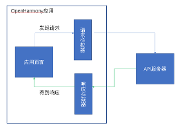react原理之lane优先级和diff更新
React 16中处理优先级的模型是expirationTime,它使用一个时间长度来描述任务的优先级。而React 17则使用Lane模型来处理任务的优先级,它通过将不同优先级赋值给一个位,通过31位的位运算来操作优先级,能够覆盖更多的边界条件。简言之:使用二进制数来表示任务的优先级。
为了理解的完整性,本文从 React 架构上 schedule, diff 和 commit 三个阶段的流程进行展开
1. Schedule
1.1 创建更新任务
在首次渲染和用户触发事件时会创建一个更新任务,并分配一个优先级,接着放入 fiber.updateQueue 更新对列中,交给 Scheduler 调度更新
fiber.updateQueue 是一个环形结构pending 指针指向最后一个 update,新的 update 插入过程:
const pending = sharedQueue.pending
if (pending === null) {
// 第一个 update 进入队列,创建一个环形结构
update.next = update
} else {
// 最新的update插入到首尾中间
update.next = pending.next
pending.next = update
}
// pending 指向最新的 update
sharedQueue.pending = update
创建环形结构是为了能一次找到首节点和尾节点
1.2 优先级
优先级本质就是比较大小,对于区间优先级,react 使用了二进制运算来判断是否处于区间中,最多有 31 位,每一位都是一条车道,
如判断 lane 是否在一个区间中:
// 0b0000000001111111111111111000000 & 0b0000000000000000000000001000000 === 0b0000000000000000000000001000000
export function isSubsetOfLanes(set: Lanes, subset: Lanes | Lane) {
return (set & subset) === subset
}
合并 lane:
// 0b0000000000000000000000010000000 | 0b0000000000000000000000100000000 === 0b0000000000000000000000110000000
export function mergeLanes(a: Lanes | Lane, b: Lanes | Lane): Lanes {
return a | b
}
1.3 updateQueue 执行
- 遍历
updateQueue链表,收集在当前更新任务区间的任务,即计算lane是否在当前区间内,若不满足条件,则放进newFirstBaseUpdate...newLastBaseUpdate中推迟执行。 - 执行
update,即通过getStateFromUpdate计算新的state,将其结果存到newState,剩余update插入到lastBaseUpdate后面 - 当
updateQueue都处理完成后,将最后结果存入baseState
1.4 通过时间分片实现并发
通过时间切片的方式,即将任务分解为多个工作单元。每完成一个工作单元,判断是否有高优作业,若有,则让浏览器中断渲染
可使用 requestIdleCallback 简单实现时间分片效果:
function workLoop(deadline: IdleDeadline) {
// 如果存在空闲时间
while (workInProgress && deadline.timeRemaining() > 0) {
workInProgress = performUnitOfWork(workInProgress)
}
}
// 当js线程空闲时执行
requestIdleCallback(workLoop)
为了减少commit执行(这过程用户可感知),react设计了跟踪 fiber root,也被称为 progress root 或者 wipRoot,一旦完成所有的工作,即没有下一个工作单元时,才将 fiber 提交给 dom。
2. Diff
2.1 构建树
通过 CreateElement 函数生成 element 节点
/**
* @param {string} type HTML标签类型 或 函数组件
* @param {object} props 具有JSX属性中的所有键和值
* @param {string | array} children JSX子节点列表
*/
function CreateElement(type, props, ...children) {
return {
$$typeOf, // ReactElement, FragmentElement...
tag, // ClassComponent, FunctionComponent, HostComponent...
type, // "div", [[Function]], [[constructor]]...
props: {
...props,
children,
},
...
}
}
常见的 JSX 节点有如下几点
- 函数组件,其生成的
element节点为:
{
$$typeOf: ReactElement,
tag: FunctionComponent,
type: 函数本身
}
- Class 组件,其生成的
element节点为:
{
$$typeOf: ReactElement,
tag: ClassComponent,
type: class 构造函数
}
- 原生标签或文本节点,其生成的
element节点为:
{
$$typeOf: ReactElement,
tag: HostComponent,
type: "div"或"text"
}
2.1.1 模拟CreateElement 函数执行的过程
下面的函数组件对于开发过react的同学应该不陌生,我们就以它为例子,学习学习
function App(props) {
return <h1 title="el_title">Hi {props.name}</h1> // HTML标签类型
}
const element = <App name="foo" /> // FC
转换为 CreateElement 函数调用
function App(props) {
return CreateElement("h1", {title:"el_title"}, "Hi ", props.name)
}
const element = CreateElement(App, {name:"foo"})
执行并生成的 element 节点
[
{
"type": App, // 函数组件本身
"props": {
"name": "foo" // key-value
"children": [] // 函数组件执行结果
},
{
"type": "h1",
"props": {
"title": "el_title" // key-value
"children": ["Hi", props.name] // 注意喔,是数组类型
}
}
]
注意喔,函数组件的 children是来自于函数的运行结果而不是props, 即 children = type(props)
在这个过程中,返回的TreeNode树结构为[{...},{...}],是一棵普通的树结构,基于递归遍历,无法实现断点回溯,而构建的Fiber链表,其每个 fiber 节点都有 3 个指针 ,链接到其第一个子节点 child,下一个兄弟姐妹节点 sibling 和父节点 return,且每个 fiber 都将成为一个工作单元
2.2 更新、删除
当我们需要实现 更新 和 删除 节点时,即调用setState,则需将 render 函数中收到的元素与提交给 dom 的最后的 FiberTree 进行比较。因此,我们需要保存最后一次提交给 FiberTree 的引用 currentRoot,同时,为每个fiber添加alternate属性,记录上一阶段提交的old fiber
let currentRoot = null
function Render(el, container) {
wipRoot = {
alternate: currentRoot,
}
}
function CommitRoot() {
currentRoot = wipRoot
wipRoot = null
}
注意喔,子代创建的过程伴随着比对,即为元素的子代创建fiber的同时,将old fiber与new fiber进行比对
-
如果
old fiber与new fiber具有相同的type,保留dom节点并更新其props,并设置标签effectTag为UPDATE -
若
type不同,且为new fiber,意味着要创建新的DOM节点,设置标签effectTag为PLACEMENT;若为old fiber,则需要删除节点,设置标签effectTag为DELETION
为了快速检测到变化,React 使用了 key。使其 更快速的检测到子元素何时更改了在元素数组中的位置key->fiber
3. commit 阶段
3.1 创建操作
提交创建操作会进行真实 dom 生成和 ref 初始化:
const stateNode = document.createElement(fiber.type)
fiber.stateNode = stateNode // 保存dom节点
fiber.props.ref(stateNode) // 执行props中的ref函数,传入dom节点
3.2 更新操作
更新阶段会将 props 设置到 dom
const oldProps = fiber.alternate.props
const newProps = fiber.props
// 对比oldProps和newProps,找到变化的key value然后设置到dom
3.3 替换操作
利用旧的节点找到父节点,然后替换 dom 节点为新的 dom 节点
const parent = fiber.alternate.return.stateNode
const oldDom = fiber.alternate.stateNode
const newDom = fiber.stateNode
parent.replaceChild(newDom, oldDom)
3.4 删除操作
新节点不存在,说明当前节点被删除
const oldDom = fiber.alternate.stateNode
oldDom.remove()
|
- 上一条: OneFlow v0.6.0正式发布 2022-01-12
- 下一条: 一键AI着色,黑白老照片画面瞬间鲜活 2022-01-12
- React Native 资源更新增量包的优化实践 2022-06-06
- Taro React Native 3 个更新帮助开发者高效开发APP 2021-10-21
- 历经 7 年双 11 实战,阿里巴巴是如何定义云原生混部调度优先级及服务质量的? 2021-12-02
- 二叉树02.深度优先遍历之Morris遍历 2021-12-31
- 一文吃透 React Expiration Time 2022-01-11











